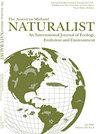建立健康森林——复垦矿区森林草本层的恢复
IF 0.6
4区 环境科学与生态学
Q4 Agricultural and Biological Sciences
引用次数: 3
摘要
摘要恢复工作,如清除入侵物种和建立本地植物群,可能是资源密集型的。因此,了解恢复工作的有效性可以为土地管理者提供进行恢复的信心。本研究评估了入侵物种清除的效果,并比较了主动重新植被和被动重新植被在增强俄亥俄州东南部回收地表煤矿土地森林完整性方面的作用。20世纪40年代至80年代,该地区发生了露天煤矿开采,留下了3704.5公顷的近乎连续的扰动足迹。这项研究发生在20世纪60年代采矿活动停止和植树开垦的较大扰动足迹的3.6公顷范围内。由于干扰,该地点很容易出现入侵物种,直到2017年开始清除。2019年春季,在移除入侵物种2年后,在播种和种植1年后,我们完成了三个处理的植被和水华调查:移除入侵物种的管理森林和随后的原生种植(已种植)、仅移除入侵物种(未种植)的管理森林和未管理森林(对照)。我们的研究发现,去除入侵物种的处理提高了植物物种多样性、植物物种丰富度、花卉物种丰富度和开花时间。与对照地块相比,种植和未种植的处理也支持包括不同群落组成的林下植物。然而,尽管应用了积极的植被重建来支持林下再生,但种植和未种植处理之间的群落组成没有差异。总的来说,2年后的结果支持清除入侵物种以改善林下草本层,可能需要更多的时间来建立种植材料,以区分不同的植被重建方法。本文章由计算机程序翻译,如有差异,请以英文原文为准。
To Establish a Healthy Forest: Restoration of the Forest Herb Layer on a Reclaimed Mine Site
Abstract. Restoration efforts, such as invasive species removal and establishment of native flora, can be resource intensive. Therefore, understanding the effectiveness of restoration efforts can provide land managers with the confidence to pursue restoration. This study evaluated the effects of invasive species removal and compared active revegetation to passive revegetation in enhancing forest integrity on reclaimed surface coal mine land in southeastern Ohio. Surface coal mining occurred in the area from the 1940s to the 1980s, leaving a near continuous disturbance footprint of 3704.5 ha. This study occurred within 3.6 ha of the larger disturbance footprint where mining activity ceased and reclamation with tree planting occurred in the 1960s. Due to the disturbance, the site was prone to invasive species until their removal began in 2017. In spring 2019, 2 y following invasive species removal and 1 y following seeding and planting, we completed vegetation and bloom surveys across three treatments: managed forest with invasive species removed and subsequent native plantings (planted), managed forest with invasive species removed only (unplanted), and unmanaged forest (control). Our study found vegetative species diversity, vegetative species richness, and floral species richness and bloom time were enhanced for treatments in which invasive species were removed. The planted and unplanted treatments also supported understories comprising a different community composition when compared to control plots. However, no difference was found in community composition between planted and unplanted treatments despite application of active revegetation to support understory regeneration. Overall, results after 2 y support invasive species removal to improve the herbaceous layer of an understory, with more time likely needed for planted material to establish in order to distinguish between revegetation methods.
求助全文
通过发布文献求助,成功后即可免费获取论文全文。
去求助
来源期刊

American Midland Naturalist
环境科学-生态学
CiteScore
1.20
自引率
0.00%
发文量
38
审稿时长
18-36 weeks
期刊介绍:
The American Midland Naturalist has been published for 90 years by the University of Notre Dame. The connotations of Midland and Naturalist have broadened and its geographic coverage now includes North America with occasional articles from other continents. The old image of naturalist has changed and the journal publishes what Charles Elton aptly termed "scientific natural history" including field and experimental biology. Its significance and breadth of coverage are evident in that the American Midland Naturalist is among the most frequently cited journals in publications on ecology, mammalogy, herpetology, ornithology, ichthyology, parasitology, aquatic and invertebrate biology and other biological disciplines.
 求助内容:
求助内容: 应助结果提醒方式:
应助结果提醒方式:


